Hippos are one of the easiest animals to find on an African safari. Pygmy hippos are one of the hardest.
In the wild, they are as much myth as reality. Native to West African swamps and forests, these introverted and endangered animals are so different from their common hippo cousins.
Hippos are widely documented mammals. Children learn about them from an early age. But what about pygmy hippos?
The pygmy hippo is incredibly difficult to study in the wild and less than 2500 of them remain. Africa Freak went on a mission to discover more about these incredible animals on the brink of extinction in the wild.
Hippo tips: If this is a topic that fascinates you, check out how fast a hippo can run, and the sounds that hippos make.
Pygmy Hippo Facts
Is the pygmy hippo dangerous? Can pygmy hippos kill humans? How big do pygmy hippos get? These are just some of the questions that will be answered below. Let’s take a look at some interesting (and fun) facts about pygmy hippos.
1. Pygmy hippo size comparison to a common hippo

Some animals have completely the wrong name. Like koala bears, which are not bears. Or flying lemurs which are animals that cannot fly, and are not even lemurs.
However, pygmy hippos are aptly named and look exactly as their name suggests. In appearance, they are simply smaller versions of common hippos.
However, a pygmy hippo is still a massive animal. How big do pygmy hippos get? They stand less than a meter in height, which is only around half the height of their common cousins.
How much do pygmy hippos weigh? Their weight is around 180-270 kg (400-600 lbs), which is less than a fifth of the weight of a common hippo.
Don’t be fooled, 180-270 kg is still a big and dangerous mammal. They may be smaller, however, they are still impressively built animals.
2. Native to West Africa
Wild pygmy hippopotami are only found in West Africa. The majority of the 2500-strong population live in Liberia, notably Sapo National Park. Taï National Park in Côte d’Ivoire was a traditional stronghold, unfortunately, the civil war has drastically reduced their numbers there.
You can still spot wild individuals in Guinea and Sierra Leone, but this species is now extinct in Nigeria.
Note that this West African range does not overlap with common hippos, so it is unknown if the two would, or could, mate in the wild. This is similar to a giraffe, an animal with various subspecies that do not overlap.
3. Pygmy hippo vs regular hippo: Who is the zookeeper’s favorite?
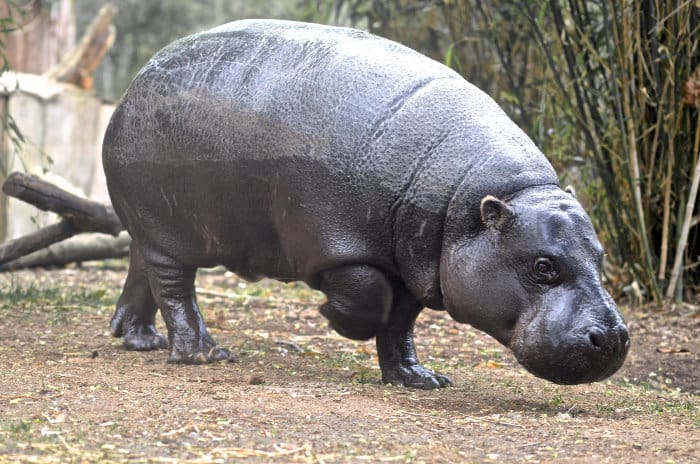
Zoos love to keep pygmy hippos and many hundreds of these animals live in captivity. They are smaller than common hippos, meaning they need less space and consume far less food (i.e. It is cheaper to keep pygmy hippo vs hippo).
And these miniatures still look just like regular hippos, so they are just as impressive (and a little cuter) for people visiting a zoo.
Most pygmy hippos in the United States have a history linked to car tires. How you may ask? Check out this story.
The owner of Firestone tires, a certain Harvey Firestone, operated an enormous Liberian rubber plantation. To keep the 30th American president Calvin Coolidge on his side, Firestone gave him a gift from Liberia – a pygmy hippo by the name of Billy.
That hippo went on to stud many pygmy hippos born in captivity inside US zoos. So if you do see a pygmy in the United States it is probably a descendant of old Billy.
4. Pygmy hippos are very picky about where they live
Common hippos need space to graze and water to stay cool. You can find them all over Africa, and especially around rivers and lakes.
Pygmy hippos won’t just live anywhere. They need water, a swamp, and a forest. Their ideal spot would be a forest surrounding a swamp that surrounds a body of water like a lake.
5. A rich vegetarian diet

Pygmy hippos graze and browse. Like common hippos, they can munch through great swathes of grass, however, most of their food comes from the forest.
They love semi-aquatic plants and forest herbs, as well as fallen fruit and young leaves. These cute creatures are more mobile than their larger cousins and create tunnel-like paths through their swampy feeding grounds.
6. The closest non-hippo relative to the hippo species is the whale
Although people thought hippos were a close relation to pigs, recent DNA research has proven the link between whales and hippos. They share a common ancestor, a semi-aquatic animal known as the walking whale.
60 million years ago the walking whale split into two directions. One side was cetaceans, which later became whales. The other was anthracotheres, a group of strange land mammals of which hippos are the only ones still alive.
Hippos and whales share the same multi-chambered stomach. They can both communicate underwater and have a dense fatty bladder protecting their bodies.
Pygmy hippos are on the same genetic line as hippos and share the same walking whale ancestor.
7. Incredible lungs designed for a life in the water
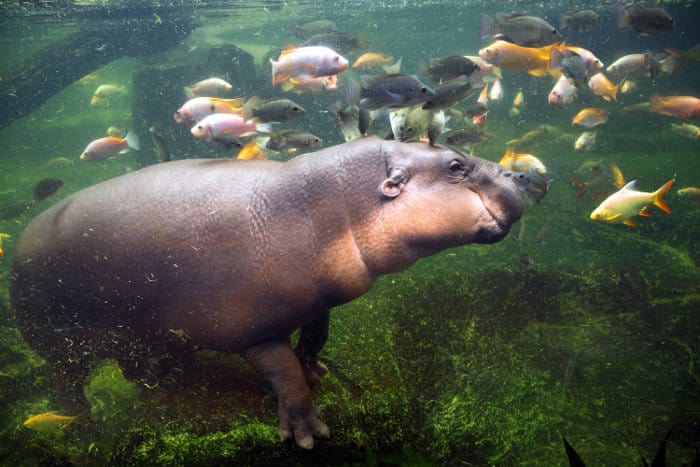
When going underwater, hippos hold their breath. Just like whales, pygmy hippos have specially designed lungs that can fill quicker than those of other mammals.
In just two seconds they can rise from the water and get a complete lung full of air. Then they can disappear and spend three to four minutes submerged on a single breath.
8. Pygmy hippos cannot swim
It is rather strange that pygmy hippos are unable to swim. Like common hippos, these smaller semiaquatic animals need water to keep their body temperature cool.
However, they do not swim around. Instead, they walk underwater instead of actually swimming.
They sink, then rise back to the surface thanks to their extreme buoyancy because of the high-fat contents in their bodies. They are also very capable of controlling their breathing which lets them float and sink at will.
9. They can nurse their calves underwater
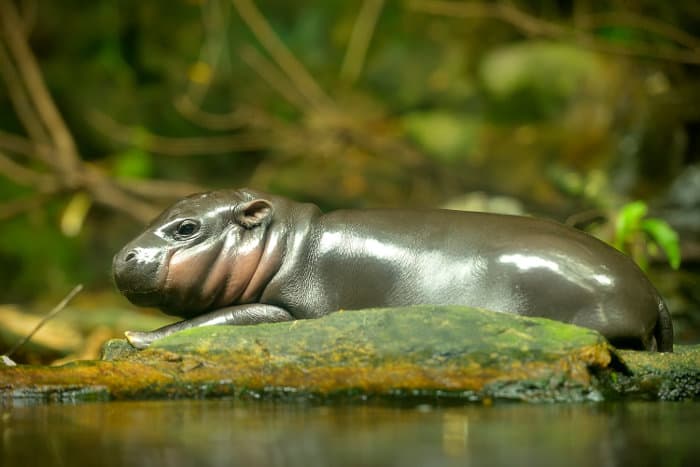
In another whale-like adaptation, pygmy hippos can suckle from their mothers when under the water. They are one of the very few mammals capable of this underwater lactation.
Common hippos are born in water. They use rivers and lakes as giant birth pools to bring their offspring into the world. In contrast, pygmy hippos give birth on land.
10. Pygmy hippos are more adapted to land than their cousins
Like common hippos, these pygmies can close their noses and ears underwater.
They also have nostrils on the top of their head. This means they can be almost entirely submerged, yet still be able to breathe comfortably.
However, pygmy hippos do not have completely webbed feet like their cousins. Instead, they can move their toes freely, an adaptation needed for living on land. Each toe has sharp nails that help them create traction in swamps.
11. The incredible facts about pygmy hippopotamus skin
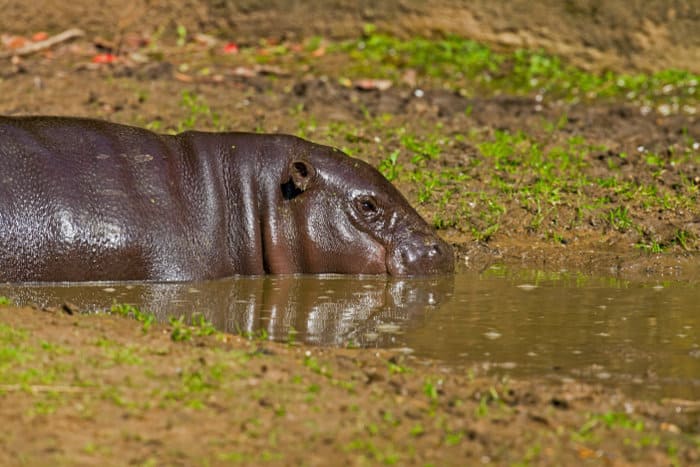
Pygmy hippos have an important adaptation that helps them survive in a humid West African rainforest.
Their skin is smooth and thin, which helps to keep them cool in humid environments. However, thin skin is susceptible to sunburn, as many of us know all too well.
Special pores emit a pink fluid and give pygmy hippos their wet and shiny appearance. Scientists have dubbed this blood sweat and it keeps them cool.
12. A solitary and reclusive animal
Common hippos gather in large pods. On a Botswana safari, you can sometimes see more than 50 hippos wallowing together in the same river.
In comparison, pygmy hippos are solitary animals. They are not very social and spend most of their life alone.
Both just before and during the mating season, you will see pygmy hippos moving around in pairs. This is not common throughout the rest of the year, however.
13. Are pygmy hippos dangerous?

You should never get in the way of a hippo. They kill more people than most large mammals on the savannah.
Common hippos have a tendency to be belligerent animals. They bully their peers and shove their weight around, grunting and growling in the process.
Are pygmy hippos dangerous to humans, though? They can be. However, pygmy hippos are not so hostile or threatening. Just stay clear of their space and you will be fine.
Are pygmy hippos aggressive? Like their larger cousins, pygmy hippos can be very confrontational. They will protect their space against any invader, whether it be antelope, people, or lions (and you should never come between a pygmy hippo and water).
14. An animal that is almost silent
The sound of a grunting hippo is one of the most common on an African safari. Sleep at a camp by the water and you can hear hippos belching and grunting their way through the day.
Pygmy hippos can go months without making a sound. They do emit sounds, unlike the giraffe, which is a silent animal. Their sounds include a low grunt and a high-pitched squeak.
Yet they mostly communicate through bodily gestures instead. How about this for a sign of submission? A pygmy hippo will lie on its back and urinate while wagging its tail.
The main sound made by these smaller hippos is a loud exhale of breath, almost like a huff.
15. The ongoing threat of poaching

Less than 2500 pygmy hippos survive yet poaching remains rife.
Poachers hunt them for their ivory teeth. Each of these hippos can be carrying as much ivory as a young elephant, so they have been prime targets over the last 50 years.
Pygmy hippos are routinely hunted for bushmeat as well, a problem that got worse during the civil war in Liberia (1989-1997 and 1999-2003) and Côte d’Ivoire (2002-2007 and 2010-2011).
When people are fighting and end up displaced, there is rarely much thought for the animals.
16. Habitat loss is their biggest problem
Fortunately, pygmy hippos have been able to find some refuge inside national parks. Here, the armed rangers protect the hippos and help to keep out poachers.
Such large animals do not have natural predators. Even a newborn pygmy weighs 30 kg so it will not be an easy meal. Plus, an angry mother could take down any leopard or lion.
Their only natural predator in the wild has been leopards. Sadly, people see very few leopards in Liberia or Côte d’Ivoire, and we really do not know whether leopards and pygmy hippos interact.
Their biggest challenge has always been habitat loss. These hippos are incredibly picky about their home. Remove the forest and they have very few places to go.
According to the IUCN red list, the key threats to pygmy hippo populations are logging, wood harvesting, mining and quarrying, plus agriculture replacing woodland.
Pygmy hippos need to eat 40-50 kg of vegetation every single day. As humans clear the forest, there is not sufficient food for these animals to thrive.
Pygmy Hippopotamus Facts
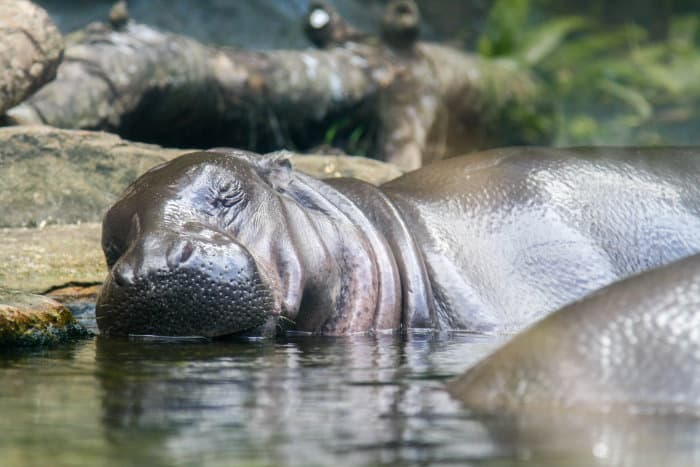
Now you know all about pygmy hippos, how about booking a safari to see them in West Africa?
While this may sound adventurous, you can visit national parks in Liberia and Côte d’Ivoire, where encounters with the hippos are said to be guaranteed.
If you have made such an adventure then we want to know about it, as an experience with pygmy hippos would really be a connection to your wild side.
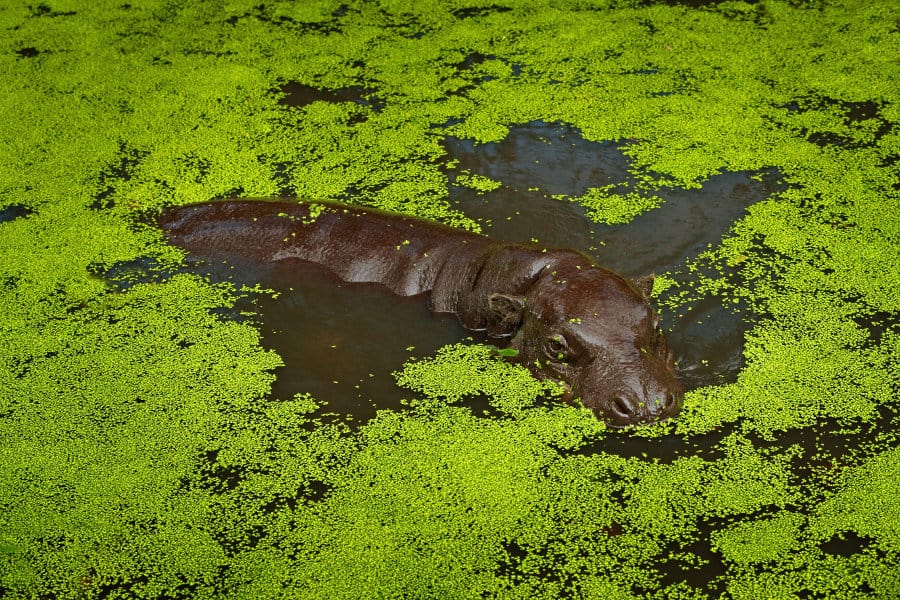

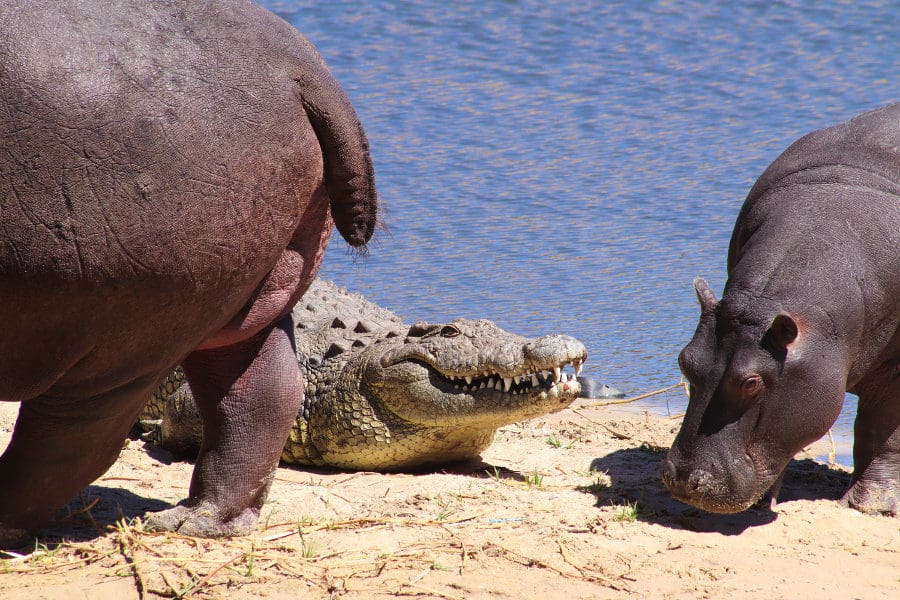

I love the info, hippos are my favorite!